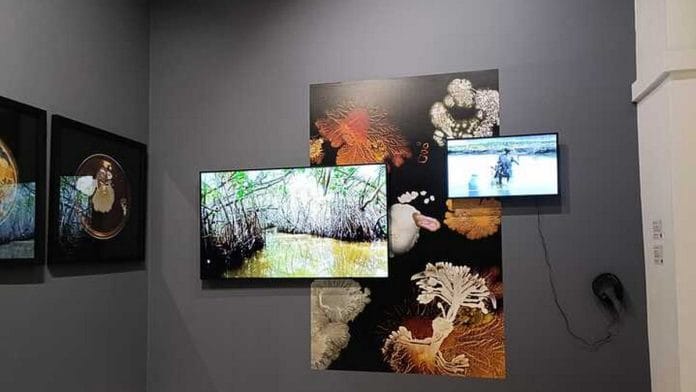New Delhi: A rectangular lidless glass box filled with white sand from Ladakh’s Nubra Valley invites viewers to touch, feel, and play with the grains. Move the sand a bit, and images of sea buckthorn, wild syah rose, and black goji berry plants can be seen underneath. All the plants are native to Ladakh. And the prints, called anthotypes, are made using plant juices as emulsion agents, dried on the banks of a local river.
This is artist Anuja Dasgupta’s attempt to show that nature is never static. “Cameras freeze a moment in time, but that’s not how nature works in real time. These anthotypes change, sometimes fade away, and have traces of natural emulsions on them,” said Dasgupta. Her installation, ‘Against the Grain’, is part of a larger exhibition on the earth’s critical zones at the Max Mueller Bhavan in New Delhi.
When art interrogates climate change, the goal is not to provide answers as much as it is to jolt viewers out of their complacency and join in the conversation. The new travelling exhibition where Dasgupta’s work is on display, does this by reimagining critical zones—the Earth’s outer skin where rock meets life. In these zones, water, soil, living organisms and atmospheric gases interact to form the bedrock of life.
The exhibition, titled ‘Critical Zones: In Search of a Common Ground’, centres on the symbiosis and delicate balance of the biosphere and habitable world, and shows how human actions and climate change threaten this life-sustaining dance. It’s a visual representation of French philosopher Bruno Latour’s work on the importance of critical zones. The ZKM Center for Art and Media in Karlsruhe, Germany, translated Latour’s ideas into the exhibition, which is on display at the Goethe Institut in the Max Mueller Bhavan until 3 March.
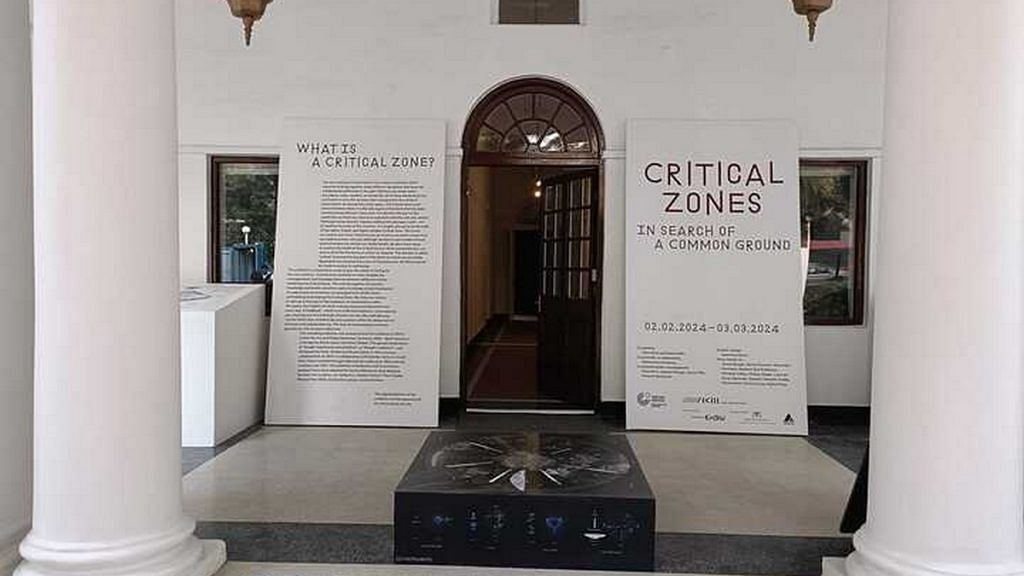
As it moves from place to place, the exhibition evolves. At each of its five stops in India—Mumbai, Pune, Kolkata, New Delhi, and Bengaluru—it integrates different local artists’ interpretations of critical zones.
In the current leg, alongside the 27 pieces from the original German exhibition, the works of six Delhi artists are also on display.
“I didn’t have to do much honestly — nature helped me represent itself in my anthotypes,” said Dasgupta. Her artwork aims to highlight the indigenous vegetation of Ladakh while also showing how climate change and unplanned development practices erode it.
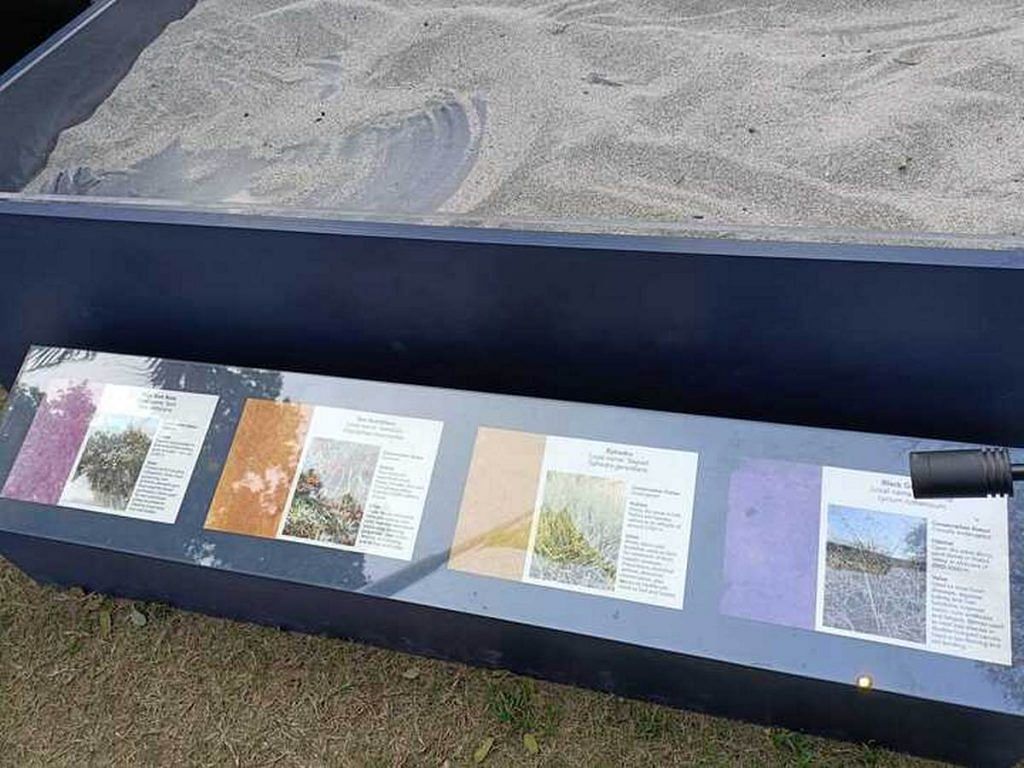
Also Read: This Delhi art exhibit on throwaway culture is full of ‘trash’. The medium is the message
A somewhat disjointed tribute to symbiosis
The entire ground floor of Max Mueller Bhavan has been transformed into an exhibition space. Some of the exhibits spill out onto the lawn and the exterior walls—almost as if to show that nature cannot be trapped in a room.
Two giant podiums flank the doorway, each featuring videos that explain fundamental earth processes like the biosphere, atmosphere, gas production, and the carbon cycle.
Another podium displays a 19th-century map by the German naturalist Alexander von Humboldt, illustrating the geographical layers of the critical zone. The viewer is immediately thrust into the scientific intricacies of this zone, and how scholars have visualised it in the past.
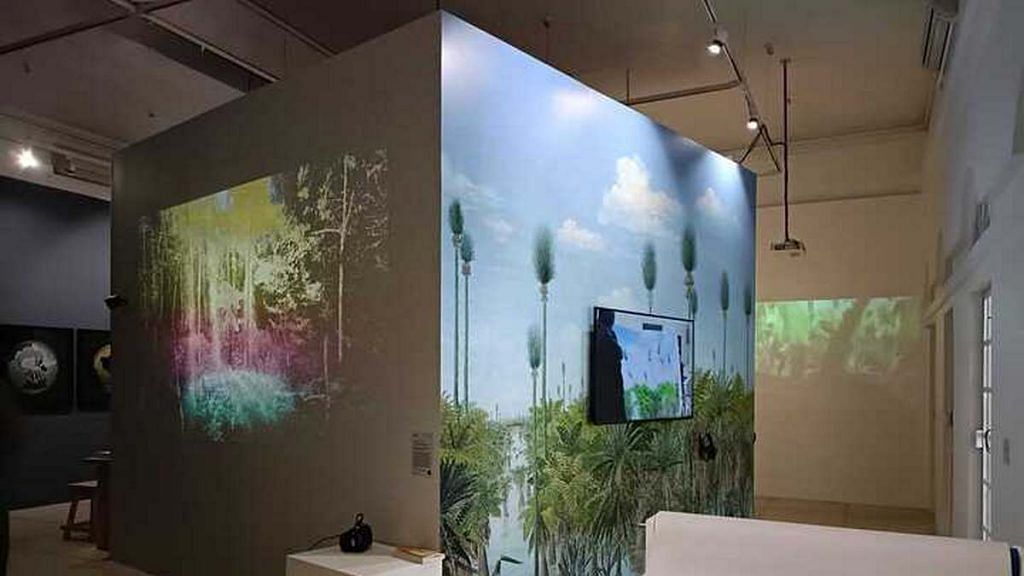
The next section of the exhibition switches gears to organism microbiology, featuring a photo gallery and a wall of research paper cut-outs on symbiogenesis—a process where different organisms merge and evolve as one over time.
In exploring the intricate relationships between organisms, it’s essential to consider how these interactions can lead to significant evolutionary changes. This concept is evident in studies of symbiogenesis, where different species merge and evolve together, showcasing the complexity of life on Earth.
Other immersive exhibits include Spanish artist Edith Morales’ exploration of a self-fertilising maize variety and its changing relationship with the Mexican tribes that grow it, and Forensic Architecture’s ‘Cloud Studies’, a visual rumination on tear gas, toxic white phosphorus fumes, and smoke resulting from arson.
Yet, ambitious as the exhibition is, the individual installations don’t really seem to speak to each other.
For instance, Rasa Smite’s virtual reality installation ‘Atmospheric Forest’ visualises the emissions from pine trees in a season and how climate change may alter the ‘scent’ of a forest. Right next to it, Armin Linke’s photo book Prospecting Ocean documents deep-sea mining by corporations. Both installations address human action in the Earth’s critical zone, but lack thematic connection.
Despite the overarching theme of how the processes of nature are interconnected, the exhibition itself fails to bring symbiosis into its exhibits.
Visitors, however, did not seem to be bothered by the occasionally jarring flow of the displays.
“It is really interesting how the exhibition makes science so much more accessible to the public,” said 25-year-old Sanjoli Chandak, who had come from Gurugram to visit the exhibition. “Through art, it addresses the public on important scientific concepts and debates.”
Also Read: Much-awaited Modi Gallery at PM Museum is a glowing tribute. All triumphs, no trials
Indian perspectives
The Indian artists chose diverse themes, ranging from the Himalayas to hypertoxicity. Amarjeet Singh chose to explore the latter through the Bhopal gas tragedy. An alcove near the end of the exhibition leads into a room with neon-green lighting. Books and pamphlets on the 1984 Bhopal disaster and philosopher Antonio Gramsci’s “cultural hegemony” were bookmarked and displayed against one wall. Through this installation, titled ‘Hypertoxicity’, Singh aimed to highlight the literal and metaphorical toxicity within society.
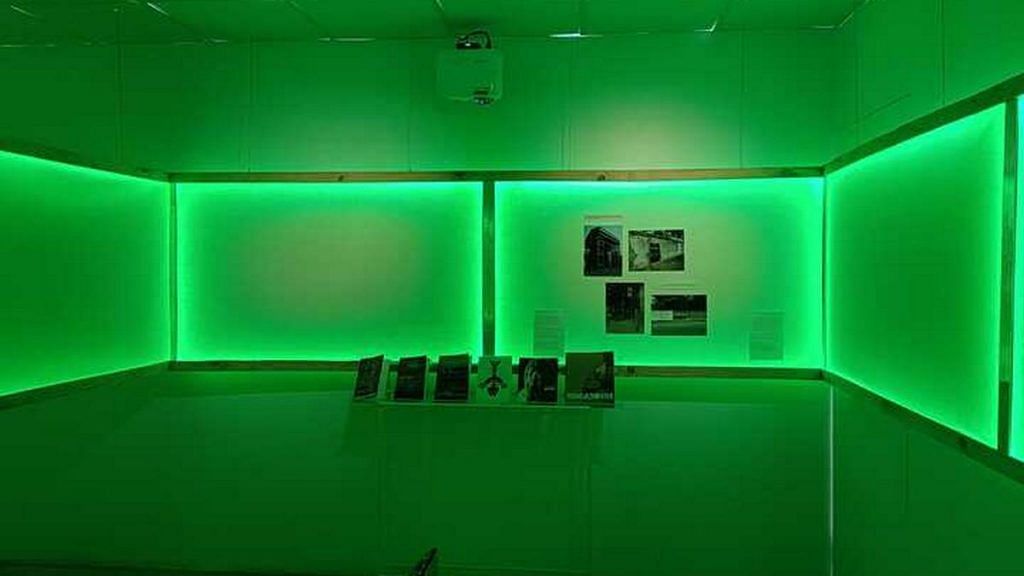
Exiting the complex, it’s difficult to miss a makeshift structure on the grass with heaps of dug-up soil around it. At first glance, it looks like a half-done construction project, but it’s actually an installation from the Critical Zones exhibition. Created by Rajasthan-based artist Ankur Yadav, this bold artwork represents the degradation of Earth’s terrain due to anthropocentric and natural factors and challenges viewers to engage with raw landscapes devoid of traditional aesthetics.
With its attempt to showcase the vulnerability of Earth to climate change and human encroachment, ‘Critical Zones’ can feel overwhelming. But this is only apt, according to Chaharika Uppal, a student volunteer at the exhibition.
“The critical zone quite literally encompasses all that is living,” she said. “How can any attempt to capture it not seem overwhelming or monumental in scale when the subject matter is so?”
(Edited by Asavari Singh)



